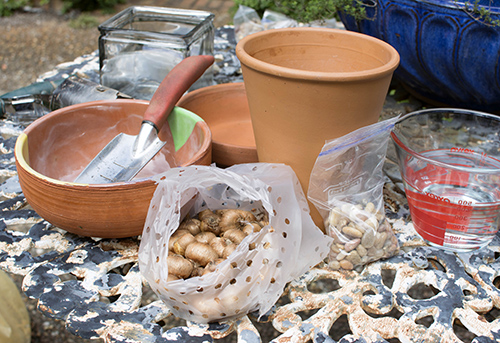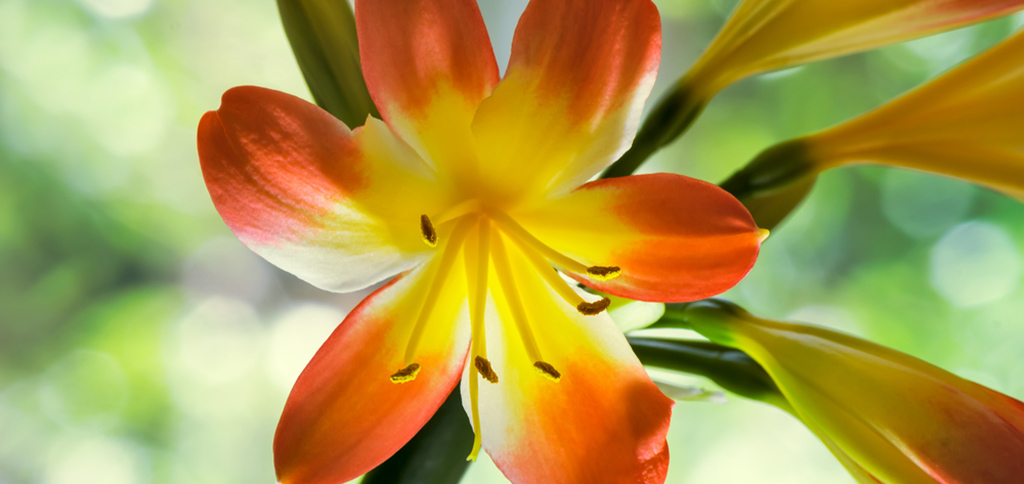Coaxing spring to come a little early
Though pumpkins, gourds, mums, fall leaves and the like are beautiful and abundant this time of year, sometimes you just need a little reassurance that spring will again return. One of the easiest ways to get that reassurance is to plant spring-blooming bulbs, both in the yard and for the house.
Here in Alabama, the best time to plant late winter and early spring flowering bulbs in the landscape is in the fall, a process that can continue into December and even January. Now is also a fine time to buy bulbs as holiday gifts or to “force” potted bulbs into bloom.
Forcing bulbs (I like to think of it as coaxing bulbs) into bloom is relatively easy. All you need is a little advanced planning, an attractive container and the right growing conditions — some pebbles or a sterile, lightweight potting media, a little bit of water and some time in the dark. Oh, and a touch of patience.
While many types of bulbs can be convinced to bloom inside during the winter, some such as paperwhites and amaryllis are easier because they do not require a chilling period. Others, such as crocuses, daffodils, hyacinths and tulips, need to be exposed to a period of colder temperatures (typically 30-45 degrees F for a few weeks) to bloom well.
You can achieve this chilling requirement by keeping loose or potted bulbs in a cold frame or in an unheated attic, cellar or garage or by keeping loose bulbs in a breathable bag (paper or mesh are ideal) in your refrigerator’s vegetable drawer for several weeks (read the bulb packaging labels to determine specific chilling requirements). Just make sure to keep the bulbs away from any fresh fruits and vegetables that may emit ethylene gasses, which can damage the bulbs’ latent blooms, and label them as nonfood items so no one unwittingly tries to taste them (they can be poisonous if consumed)!
 Though specialized bulb forcing containers are available at many garden shops, you can also use a wide range of attractive pots or containers that you may already have on hand, the selection of which will depend on whether you want to grow the bulbs in pebbles or in a potting mix. If you’re using the pebble method, choose a shallow waterproof dish or clear glass container (so you can better monitor water levels). If you’re using a potting mix, any pot that is at least twice as deep as the bulbs you are planting will do.
Though specialized bulb forcing containers are available at many garden shops, you can also use a wide range of attractive pots or containers that you may already have on hand, the selection of which will depend on whether you want to grow the bulbs in pebbles or in a potting mix. If you’re using the pebble method, choose a shallow waterproof dish or clear glass container (so you can better monitor water levels). If you’re using a potting mix, any pot that is at least twice as deep as the bulbs you are planting will do.
The pebble method works best for paperwhites, crocuses, hyacinths and other smaller-sized bulbs. Simply place about two inches of clean pebbles or small decorative rocks (you can use marbles or decorative glass for this as well) in the bottom of the container, nestle the base of the bulbs into these pebbles so that the bulbs are close together but not touching, then add enough additional pebbles, glass or marbles to snug the bulbs in firmly. You should be able to see the tops of the bulbs through the pebble layer.
If you’re planting bulbs in a potting mixture, fill the pot half full with the potting media, position the bulbs base-side down, then cover them loosely with more potting media so that the upper halves of the bulbs are still visible.
Add enough water to touch the base of the bulbs if they are in pebbles; for potting mix-planted bulbs, add enough water so the potting mix is moist but not wet.
Now is when patience is needed. Place the containerized bulbs in a cool, dark place (closet, basement, etc.) and leave them alone for three weeks or so, then start checking them weekly to look for signs of sprouting. Check the water levels periodically to make sure they don’t completely dry out.
Once you see shoots — which can take four to 10 weeks depending on the bulb type — bring them out of storage, water them and place them in a cool room (60 to 65 degrees F) with low light until they begin to bloom. When blooms appear, the plants can be moved into a warmer environment, though if you want to prolong bloom times keep them in cooler parts of the house. To keep a steady supply of bulbs in bloom, make up new pots of bulbs every two or three weeks and repeat the process so that something new will be coming into bloom throughout the winter months.
To learn more about coaxing bulbs into bloom, check with your local garden center, search for information on the Internet (the American Daffodil Society is a great source at www.daffodilusa.org) or get a copy of the Alabama Cooperative Extension System’s publication “Home Bulb Forcing” (publication number ANR-1325) at www.aces.edu or through your local Extension office.
Bulbs
- Some supplies you’ll need to force bulbs into bloom include pottery or containers (any size is fine), water, pebbles or a lightweight growing media.
- Space the bulbs apart in a shallow dish with pebbles deep enough to leave the tops showing. Add water until moist.
- Some bulbs will do better in soil. Fill a pot half full with potting media, position the bulbs base-side down, then cover them loosely with more potting media.
- These bulbs are ready to be placed in a cool, dark area of the home.
photos by Allison Griffin
NOVEMBER Garden Tips
- Plant woody shrubs, vines, trees and roses.
- Store unused pesticides in sealed containers and place them in freeze-protected locations.
- Fertilize shade trees.
- Turn the compost pile.
- Test your soil and begin adding needed amendments once the results are in.
- Apply mulch to newly planted trees and shrubs and tender perennials.
- Plant beets, carrots, radishes, garlic and asparagus.
- Plant pansies, sweet peas, poppies, snapdragons, larkspurs and delphiniums.
- Keep bird feeders cleaned and filled.
- [list]
[/list]

Katie Jackson is a freelance writer and editor based in Opelika, Alabama. Contact her at katielamarjackson@gmail.com.






